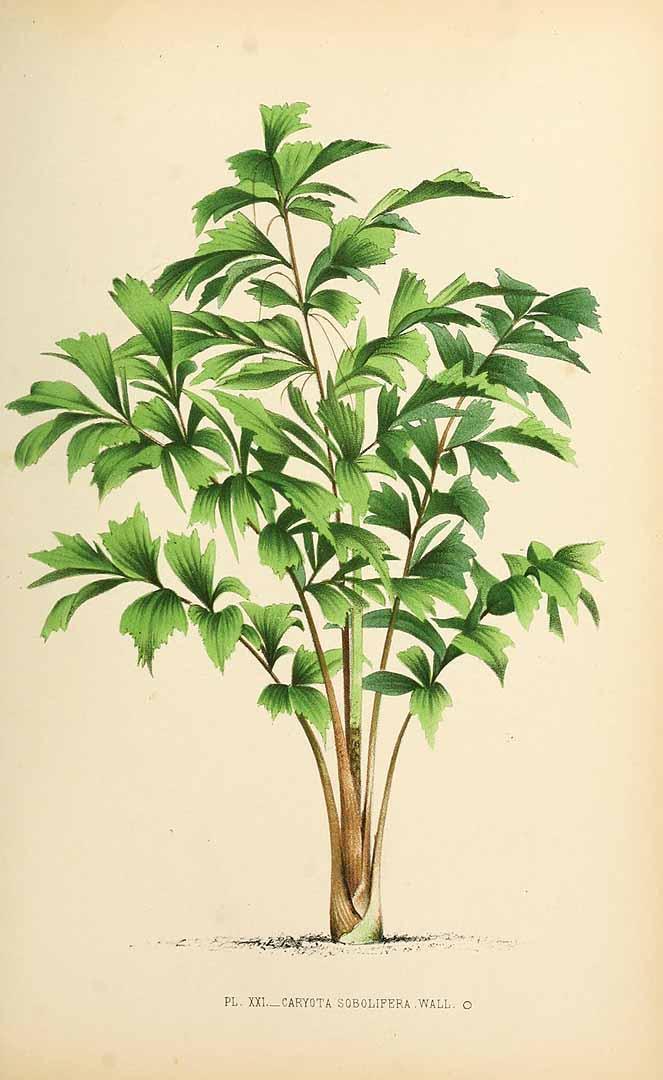Caryota mitis Lour.
ArecaceaeOriginaria de Java, Malasia, Filipinas, archipiélago de Andamán, Birmania y Tailandia, esta palmera de múltiples troncos anillados, pertenece al género Caryota, en griego 'nuez', aludiendo a sus frutos. El epíteto mitis significa 'sin espinas' o 'blando' en latín.
De crecimiento rápido, esta palmera multicaule suele tener tallos delgados, y cada vez que florece uno de sus troncos, éste muere, apareciendo otros nuevos en su lugar. Sus hojas bipinnadas, tienen una forma característica, con ápice dentado y truncado, como si se hubiesen roto. En su zona de origen con sus hojas se elabora una pasta usada como cauterizante, y es una de las plantas de las que se obtiene harina de sagú (como en algunas cicadáceas). De sus flores también se extraer el toddy o vino de palma, y de éste se puede obtener azúcar y aguardiente.Procedencia
OceaníaCalendario
Hábitat
Morfología
Tipo
 Palmera
Palmera
 Palmera
Palmera
Porte
 Mata
Mata
h: 6 a 10m
r: 2,00
 Mata
Mata
Hoja
 Bipinnada
Bipinnada
 Bipinnada
Bipinnada
Lámina
 Triangular
Triangular
 Triangular
Triangular
Lámina
 Romboidal
Romboidal
 Romboidal
Romboidal
Margen
 Dentado
Dentado
 Dentado
Dentado
Follaje
 Perenne
Perenne
 Perenne
Perenne

 Powered by
Powered by